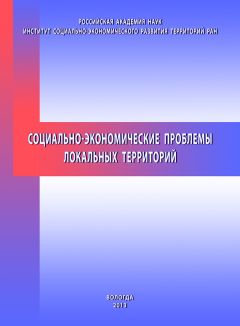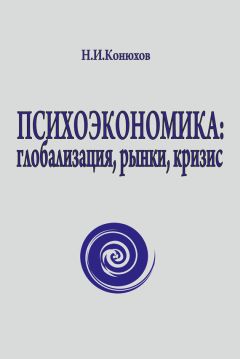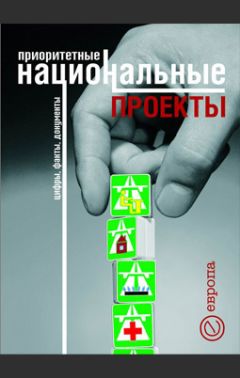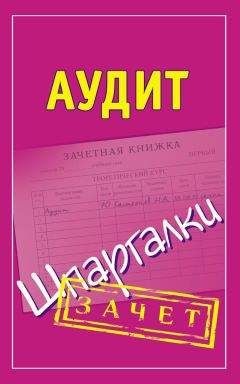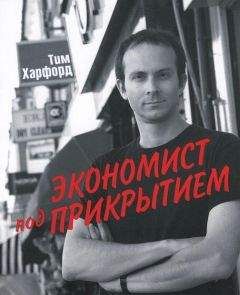Николай Камзин - The implementation of the economic cycle: freedom, trust, duty
Все авторские права соблюдены. Напишите нам, если Вы не согласны.
Описание книги "The implementation of the economic cycle: freedom, trust, duty"
Описание и краткое содержание "The implementation of the economic cycle: freedom, trust, duty" читать бесплатно онлайн.
Existentialism proclaims the idea of a man present, performing a search for meaning, making choices, self-determining in its relation to reality, possessing an active subjective entity. In the process of economic activity a person is faced with the action of their own will influence other areas of the will of the active agents. He needs arise that require his satisfaction, he is involved in the economic cycle, some of which sectors are investigated in this study, namely: entrepreneurship, as a consequence of the implementation of a new combination of natural factors, business risk as a source of entrepreneurial profit and a catalyst for economic activity, business as routine economic activities aimed at developing the existing building, international business, as economic activity is possible at a potential that is created by public constraints, international payments, as the movement of financial resources for a business, writ proceedings, as inevitable, the procedure of execution of mutual obligations with the participation of the public entity, collateral relations, as security relationships that create a safety buffer for the counterparty.
– Spontaneously evolving situation, and partly subordinate the will of the subject;
– Interested in an active participant in the situation;
– The possible values of the commensurability of the damage and the likelihood of certain developments.
Entrepreneur, introducing its innovation, expect success, given that his «neue kombinationen» does not have a specific practical expression of a wait, he cannot, therefore, as its active operations were seen as a direct damage, they would not present risks, and would have been a deliberate bleak.
Entrepreneur – An interpreter has in mind the potentially possible situation – the result of past experience, or his employer, or his attention would not be drawn to this combination, because the probability of corridor narrows adversity. Like the legal norm of organized «business» is regulated and gradually falls into a set of regulations, compliance with which ensures the success and, ultimately, becomes a «franchising»[22]. In the framework of a enterpriser using commonplace factors of production of finished formula (combination) operates the enterprise with a moderate risk. In this situation the relevant transactions risk. It is in this activity economically active subject is urgently needed training received during the development of the course «MBA», business administration includes[23] action under, or the legal corridor legislation, or corporate regulations and instructions. The entrepreneur is more creative than individual performer, it is inherent in the freedom of innovation and radical solutions, and on the principle of «stick» to the ends of which are enterprise profits and enterprise risks.
2.3. The inner essence of entrepreneurial risk
Enterprise idea to implementation primarily intended to be part of public goods and cannot materialize without the capital. When taking into account the risk of most adverse developments is the loss of capital and loss of profit, otherwise the capital would be used in another «case». If the employer does not use its own capital and borrowed it, I believe, no doubt, that the risk associated with the preservation and capital increase fully in the capitalist, and the employer will only be bound by a set of commitments to his satisfaction.
Compensation for damage – a process, a complete enterprise -to-date in today's realities, at a mass default. The essence of entrepreneurial risk is the reputation of an entrepreneur, an intellectual who is listening to the ideas in the course of its enterprise has acquired a certain prestige, showing its potential. Unsuccessful innovation may deprive the trader investor attention, and he will have to finance their start from their own sources, or reduce the potential of their own enterprise profits. However, the cause of enterprise failure in any public sphere is not only the entrepreneur bug, because then the question of risk, uncertainty of circumstances. Analysis of the behavior of the major economic actors – entrepreneurs shows that the crisis downturn in the economy – is the result primarily of «wrong» enterprise decision. Moreover, these solutions are not wrong in terms of individual entrepreneurs, but from the point of view of society. As a rule, this «irregularity» appears on the stage of recovery[24]. After the revitalization of many initiatives, when the capitalists have provided their capital entrepreneur and expect it to return to growth. Entrepreneurs are at the center of attention, feel themselves masters of the situation, but above all, are obliged to borrowers that meet the needs of society. Enterprise risk is to determine the relevance of social needs that provides «neue kombinationen».
2.4. Justification the need to protect entrepreneurial risk
Entrepreneurship is a catalyst for economic activity and development in general. As a factor in the production of any «deal» begins with an entrepreneurial initiative.
Potential entrepreneurs like the movement of information is transmitted «case» of an enterprise owner – and interpreter’s remains relevant have a fruitful influence. If the economic sphere would only enterpriser, then eventually all of their enterprises, «business» will lose its capacity and will be the usual circuit with minimal risk and profit, in the end, and even subsidized enterprises.
Entrepreneurship promotes progress, spins the flywheel economic, but, of course, charges a fee for it – a part of business profits, other shares are capitalists and other subjects. Enterprise risk is high, which may become an obstacle to the realization of entrepreneurial initiatives.
A small proportion of entrepreneurs have a capital that can be used to finance its innovation, and funding the day, if it fails just lose it and lose this opportunity for future ideas.
It would be reasonable in view of claims against the enterprise profits of the capitalists and the community to attract and insurers. That is to innovate entrepreneurs need capital, as well as some additional portion of the capital, which is levied on all employers. Thus, if part of the enterprise initiatives will be a failure, the capitalists will receive compensation for their capital, and entrepreneurs, emotionally, to rehabilitate, will continue to generate «neue kombinationen».
This mechanism is not new in the professional field auditors, appraisers, court-appointed trustees operate their interpretation. Before starting to work a person must insure his liability to a certain fixed amount imperative, and in the process of professional services, as necessary, carries out additional insurance, if the estimated amount of liabilities and risks increase.
In this case we are talking about professionals specific areas of activity, enterprises are more than entrepreneurs, but the mechanism provides a practical example. It is also important and consideration of other risks could affect the expected set of circumstances.
However, despite the risks involved, these relations contribute not only the movement of capital but also the transformation into capital of money and goods, means of subsistence and means of production, transformation is possible when «two very different types of the commodity to meet each other and come into contact»[25].
3. Exchange rate
3.1. The essence of the exchange rate
International economic transactions involve the exchange of national currencies, the exchange takes place on a certain ratio. The relationship between monetary units of different countries is the price currency of one country expressed in the currency of another country, called the exchange rate. «The main theme of economic life can be indirectly measured in money»[26].
Currency (exchange) rate (exchange rate) – price per unit of national currency, expressed in units of foreign currency[27].
Exchange rate – this is not a technical conversion factor, and the «price» of the currency of the country, expressed in foreign currency or international currency units.
The exchange rate is necessary for the international foreign exchange, settlement, credit and financial transactions. For example, exporters exchanging foreign currency proceeds to the national as well as in normal circumstances, the currencies of other countries are not treated as cash funds within the State. Importer acquires foreign currency to pay for purchased goods abroad.
3.2. The basis of the exchange rate
Cost basis of the exchange rate is purchasing power parity (PPP etc.), that is, the ratio of rates for their purchasing power. Purchasing power is the national average price levels for goods, services and investments. In the free exchange of the notes for gold and gold free circulation between the two countries exchange rate slightly deviates from PPP because of the mechanism of gold dots. The mechanism of gold dots – the limits of deviation from the monetary exchange rate parity (usually less than 1%) lower (at which begins the outflow of gold from the country) and upper (starts its flow). Monetary parity – the ratio of weight of gold in monetary units (coins) in various countries.
In the paper money circulation exchange rates may significantly deviate from the PPP[28]. In many developing countries and countries with economies in transition, the exchange rate in 2 – 4 times lower parity. Deviation from the PPP exchange rate is influenced by supply and demand for the currency, which in turn depends on various factors.
Exchange rates are published in the press. Typically, in the current information contained in the previous two quotes of the day and short-term forecasts.
3.3. Factors affecting the exchange rate
Should distinguish between circumstantial and structural (long term) changes affecting the exchange rate.
Conjuncture factors affecting the exchange rate:
– The state of the economy (inflation rate, interest rates, currency markets, speculation, monetary policy, balance of payments, the extent of the use of national currencies in international payments, the acceleration or delay of International Settlements);
– The political situation in the country (political factor);
– The degree of confidence in the national currency at the national and international markets (psychological factor).
Circumstantial factors associated with fluctuations in enterprise activity, political and military-political situation, guesses and predictions. The exchange rate depends on how pessimistic or optimistic about the company with respect to public policy.
The higher inflation in the country compared with other states, the lower the rate of its currency, if not counteract other factors. Inflationary depreciation of money in the country causes a decrease in their purchasing power and a tendency to decline in their exchange rate[29].
The exchange rate affects the degree of currency on world markets. In particular, the preferential use of the U.S. dollar in international transactions and international capital markets is a constant demand for it and maintains its course even in the fall of its purchasing power or passive balance of payments[30]. Rising interest rates on deposits and (or) the profitability of securities in any currency will increase the demand for that currency and will lead to higher prices. Relatively high interest rates and yields of securities in the country (in the absence of restrictions on capital flows) will lead in the first place, the influx into this country of foreign capital and thus – to increase the supply of foreign currency, it’s cheaper and more expensive currency. Second, bring a higher return deposit and securities in national currency promote national cash outflow from the currency market, reducing demand for foreign currency, and a decline in the foreign and local currency appreciations.
With an active balance of payments is growing demand for its currency from foreign debtors, its rate can be increased.
Economic importance of the exchange rate determines the need for its regulation.
Along with the market conditions, which include the effect is difficult to supply and demand for currency, is the dynamics of its course, affect, and relatively long-term trends that determine the position of a national currency in the currency of the hierarchy (structural factors).
Structural factors:
– The competitiveness of goods on world markets and its changes. They are caused, ultimately, technological determinants. A forced export stimulates the flow of foreign currency;
– The growth of national income causes an increased demand for foreign products, while imports of goods may increase the outflow of foreign currency;
– A consistent increase in domestic prices compared to prices in the markets of partners increases the desire to buy cheaper foreign goods, while the tendency of foreigners to purchase goods or services that become increasingly expensive, disappears. As a result of reduced supply of foreign currency and depreciation is domestic;
– Other things being equal, higher interest rates is a factor in attracting foreign capital and, consequently, foreign currency, and can also lead to higher prices of domestic. But the rise in interest rates is well known, and the shadow side: it increases the cost of credit and a depressing effect on investment activity in the country;
– The development of securities market (bonds, bills of credit, stocks, etc.) that make up a healthy competition the foreign exchange market. The stock market may attract foreign currency directly, but also attract national funds which would otherwise be used for buying foreign currency[31].
3.4. The main methods of regulating the exchange rate
The main body of the foreign exchange regulations of the Russian Federation is the Central Bank of Russia. It defines the scope and procedure of appeal to the Russian Federation, foreign currency and securities in foreign currency, sets the rules for the residents and Russia operations with foreign currency and securities in foreign currency, as well as rules for non-residents operations with rubles and securities in rubles; establishes the procedure for compulsory transfer, import and transfer to Russia of foreign currency and securities in foreign currency belonging to residents, as well as events and conditions of opening resident foreign currency accounts with banks outside of Russia, sets out general rules for licensing credit institutions to carry out foreign exchange transactions and issues such licenses, establishes uniform forms of accounting, reporting, documentation and statistics of currency transactions.
The main methods of monetary control are:
– Currency intervention (buying and selling foreign currency to national);
– Central bank operations in the open market (buying and selling of securities);
– Change in central bank interest rates and (or) reserve requirements.
Exchange controls exercised by exchange controls and their agents. Currency control bodies are the Central Bank and the Government of the Russian Federation. Currency control agents are organizations that are in accordance with legislative acts may perform the functions of currency control.
The main directions of monetary control are:
– Determination of compliance of foreign exchange transactions with current legislation and the availability of necessary licenses and permits;
– To verify that the residents of foreign currency liabilities to the state, the validity of payments in foreign currency, completeness and objectivity of accounting and reporting of currency transactions and for transactions with nonresidents in rubles.
The object of national and transnational regulation is currency restrictions and currency convertibility regime.
As rightly pointed out Frederic Bastiat «you cannot give money to some members of the community but by taking it from others»[32]. Cash is in fact equivalent to existing facilities, money is their «mirror image», and, therefore, imperative redistribution of opportunity or simply move the cost of changing the terms without affecting the sum.
Foreign exchange restrictions – is introduced in legislation or regulation, restriction of operations with national and foreign currency, gold and other currency values.
Distinguish restrictions of payments and transfers for current transactions balance of payments and financial transactions (is transactions involving the movement of capital and credit), the operations of residents and nonresidents.
The number and type practiced in the country depends on foreign exchange restrictions convertibility regime. Currency convertibility (reversibility) – is the ability to convert (exchange) currency of the country for the currencies of other nations. Distinguish between free or fully convertible (reversible) exchange, partially convertible and nonconvertible (irreversible).
Подписывайтесь на наши страницы в социальных сетях.
Будьте в курсе последних книжных новинок, комментируйте, обсуждайте. Мы ждём Вас!
Похожие книги на "The implementation of the economic cycle: freedom, trust, duty"
Книги похожие на "The implementation of the economic cycle: freedom, trust, duty" читать онлайн или скачать бесплатно полные версии.
Мы рекомендуем Вам зарегистрироваться либо войти на сайт под своим именем.
Отзывы о "Николай Камзин - The implementation of the economic cycle: freedom, trust, duty"
Отзывы читателей о книге "The implementation of the economic cycle: freedom, trust, duty", комментарии и мнения людей о произведении.






